BMW iX1 Review 2025: Price, specs & boot space
Written by Andrew Brady
Quick overview
Pros
- Upmarket cabin looks great and is easy to use
- More affordable than a BMW iX3 or iX
- Expect the range to be fairly realistic in the real world
Cons
- Doesn't move the game on in the same way as the original BMW i3
- Unsure how Sport model behaves on more basic suspension
- Fairly hefty prices
Verdict: Is the BMW iX1 a good car?
"The BMW iX1 is perhaps the ultimate electric family SUV. It looks sharp, is easy to drive and has a stunning interior. It's also satisfyingly normal, which means it won't feel like a shock to the system when you trade in your Nissan Qashqai."
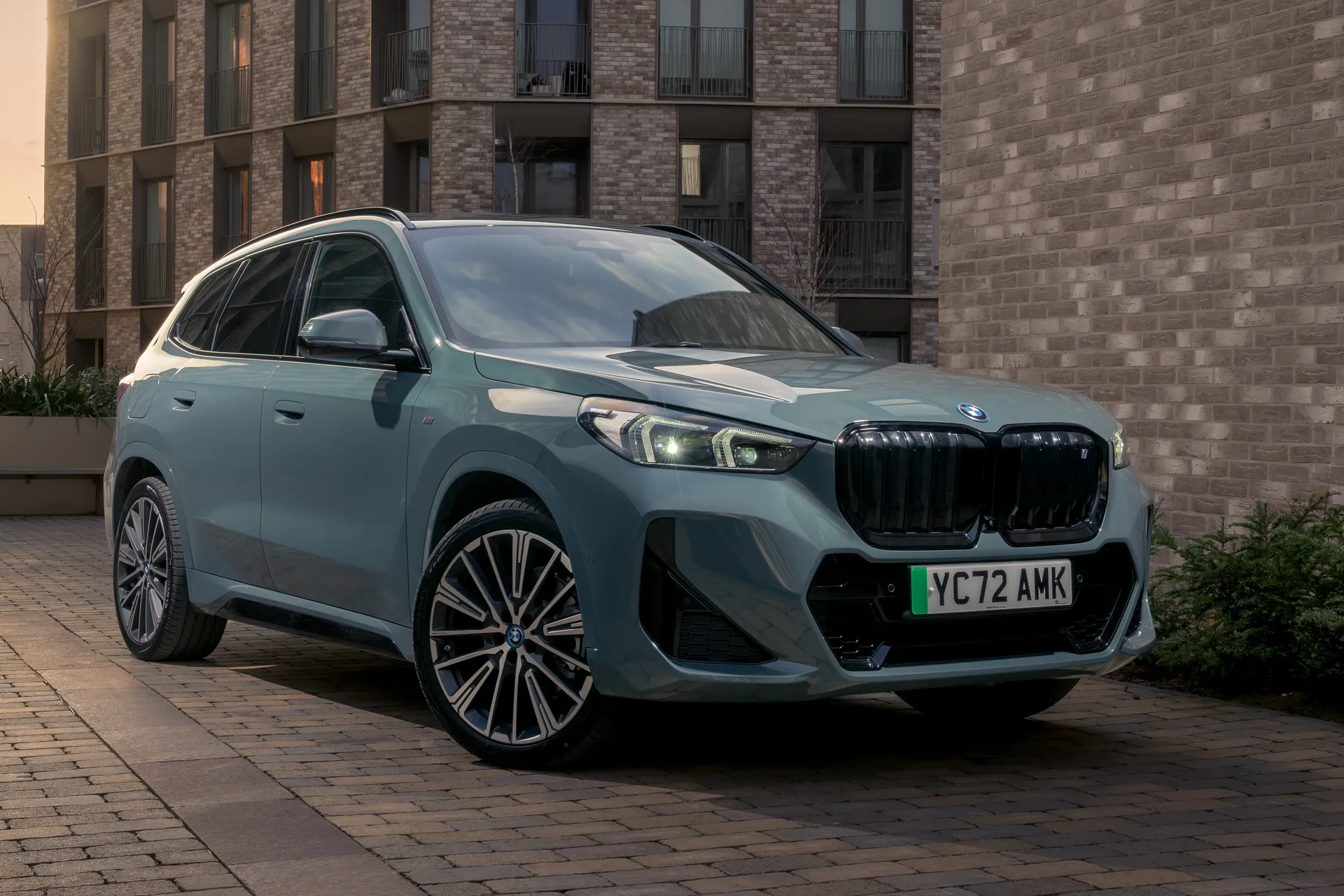
The BMW iX1 is an indirect replacement for the quirky BMW i3. It represents a whole different take on electric vehicles, though, with a small SUV bodystyle that sees it square up against the Audi Q4 e-tron, Mercedes EQA and Volvo EX40.
The smallest electric SUV in BMW's range (sitting below the BMW iX3 and BMW iX), the BMW iX1 is based on the latest BMW X1. Indeed, you'd be hard-pushed to spot the difference between the electric model and the petrol-powered car on which it's based: cosmetic upgrades include some blue exterior trim, a blanked-off grille and a lack of exhaust tailpipes.
You'll notice the biggest difference between the BMW iX1 and the regular X1 when you get in it and drive away. Not only is the iX1 exceptionally refined (even compared with other well-hushed electric vehicles), it's also remarkably quick in range-topping xDrive30 guise. That's because it comes with a pair of electric motors (one on each axle), providing a combined 313PS and 494Nm of torque. No, it's not quite Tesla quick, but you could certainly shock your mother-in-law by giving it a bootful at an opportune moment. There's also an entry-level eDrive20 version (with a single 204PS motor driving the front wheels) with more restrained performance if taking revenge on your mother-in-law is less of a priority.
More importantly, perhaps, is how quickly the BMW iX1 will charge and how far it can travel between top-ups. Well, the fairly hefty 64.7kWh battery pack under the floor will take the iX1 up to 293 miles between charges in the eDrive20, and up to 272 miles in the xDrive30. Its 130kW charge rate can add 70 per cent of range in less than half an hour. If you can charge a car at home, the BMW iX1 should fit into your life fairly easily: an overnight top-up will allow you to run around in smug solitude, never needing to visit a petrol station ever again (until you run out of milk on a Sunday evening, anyway).
There are other advantages to the BMW iX1, too. Even by electric car standards, it's extremely quiet and refined, while its impressive performance doesn't tail off at motorway speeds. There is a slightly peculiar soundtrack that's been specially developed for the iX1 and plays through the speakers but, fortunately, you can turn that off pretty easily.
The interior is lovely. Again, not that different from a regular X1's, but well finished and extremely well-equipped as standard. It's spacious enough considering it's the smallest car in BMW's electric SUV line-up, but you might want to consider the bigger iX3 if you're planning to use it as your only family transport. Kids will be fine in the back, though, and its boot is considerably bigger than you'd find in the Mercedes EQA.
There are three BMW iX1 trim levels available: Sport, xLine and M Sport. All come with BMW's latest infotainment setup, combining a large central touchscreen display with a sharp digital instrument cluster. It's an easy system to use, while you also get Apple CarPlay and Android Auto as standard (allowing you to access apps from your phone on the move).
Like all but the cheapest electric cars, the BMW iX1's biggest obstacle is its price. It starts at more than £43,000 in the UK, which makes it a significant chunk more expensive than the BMW X1. That said, it's on a par with alternatives like the Audi Q4 e-tron. At this price point, we'd struggle to overlook the Kia EV6, too: sure, it might lack the BMW brand cachet, but you get more physical car for your money, not to mention a seven-year warranty and a 328-mile range.
Looking for a used car for sale? We've got 100s of BMW Approved Used Cars for Sale for you to choose from, including a wide range of BMW iX1 cars for sale.
Is the BMW iX1 right for you?
If you're looking for an upmarket electric car that looks normal enough not to attract conversations at charging stations, the BMW iX1 could be a really good choice. It's not a cheap option but it is well-equipped and the interior feels special (without being too weird), while it's practical enough to use as your main family transport. A generous electric range and rapid charging capabilities will help here, too.
What's the best BMW iX1 model/engine to choose?
You have the choice of two powertrain versions, the brisk eDrive20 or the ballistic xDrive30. If you're not bothered about bombastic performance, the former is quite a bit cheaper to buy and goes a little further on a charge of the battery. There's no denying the appeal of the latter's strong performance, though...
In terms of trim level, we haven't tried the entry-level Sport car yet. The equipment roster doesn't seem to be lacking much, but this version does without the adaptive suspension that the other two trims get as standard. We know that the iX1 is great with this suspension, but we can't be sure it's as great without it. To be safe, we'd recommend upgrading to xLine trim, and you'll also get a few other niceties on top.
What other cars are similar to the BMW iX1?
There's no shortage of excellent electric SUVs on the market today. The BMW iX1's main competitors include the Audi Q4 e-tron, Mercedes EQA and Volvo EX40, while the Tesla Model Y and Polestar 2 are also likely to be on your radar. We'd also recommend looking at Korean offerings in the form of the Genesis GV60, Kia EV6 and Hyundai Ioniq 5: they might lack the BMW badge but they're three of the best electric cars you can buy. Other mainstream competitors come in the form of the Volkswagen ID.4 (and sporty Volkswagen ID.5), as well as the Ford Mustang Mach-E.
There's also the BMW iX2: it's what BMW calls a Sports Activity Coupe, and in essence is a coupe version of the iX1.
Comfort and design: BMW iX1 interior
"The BMW iX1's interior manages to feel posh and suitably modern for a premium electric vehicle, without compromising on user-friendliness. It's not in the least bit overwhelming, mainly because it looks and feels just like the cabin of the regular BMW X1."
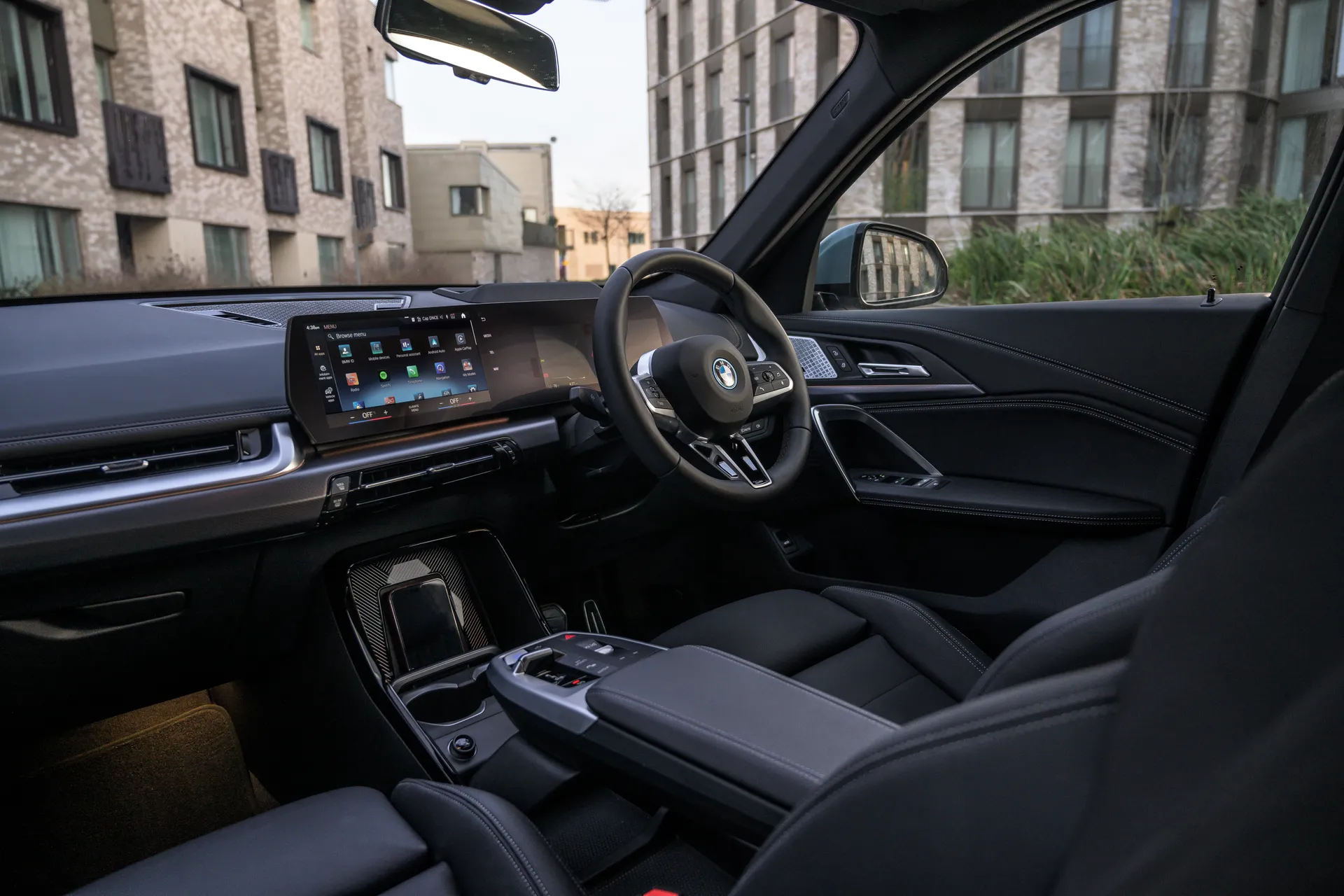
The BMW iX1's high driving position is superb, giving a clear view of the road ahead and allowing you to slide across onto the seat rather than dropping down into it. There are a few blind spots, naturally, but no more than rivals and nothing that can't be ironed out with the help of technology.
No trim level feels sparse inside. All of them come with the same twin-screen infotainment display (which is excellent apart from one small missing feature, as you'll read below), while the relatively upright dashboard means everything's in easy reach.
We do think it's a bit of a shame that the iX1 doesn't come with physical buttons for the climate control, but maybe that's seen as a bit old-hat for a modern electric vehicle such as this. You can adjust the temperature easily via the infotainment (or - even better - by yelling 'hey BMW, I'm cold'), but we'll mourn the loss of old-fashioned buttons, anyway.
Not that the cabin has gone completely minimalist. It's certainly a lot busier inside than the Tesla Model Y. The thick-rimmed steering wheel hints at BMW's driver-centric approach, while the seats are both comfortable and supremely supportive.
Quality and finish
The fit and finish of the BMW iX1 is pretty impeccable, but what else would you expect from an expensive BMW-badged SUV? It's not something that can be taken for granted, though, especially in electric cars where the batteries and the development of the tech account for a huge chunk of the cost.
Fortunately, BMW has been fine-tuning how to make a car feel good inside for decades. Even with the sustainable Sensatec faux-leather upholstery fitted to most trims, it feels posher inside than mainstream alternatives like the Volkswagen ID.4.
Infotainment: Touchscreen, USB, nav and stereo in the BMW iX1
The BMW iX1 pairs a slick 10.25-inch digital driver display with a 10.7-inch touchscreen infotainment system. It looks brilliant and is fairly easy to use, but we miss the rotary controller you get in the bigger BMW iX (and recently-updated 3 Series). Instead, you have to lean forward and prod the screen to navigate the display, or rely on the voice-activated 'hey BMW' personal assistant. Android Auto and Apple CarPlay are standard, too, so you can just call up Siri, but we always feel a bit silly doing that in a car with passengers.
It's not just the rotary controller that's been banished, either. BMW's going for a more minimalist approach with the interior of the iX1, which means fewer buttons in general, but it's still a lot more user-friendly than a Tesla's cabin. We're not keen on touchscreen controls for adjusting the temperature of the cabin, for example, but at least they're fixed on the display: no need to go traipsing through various submenus just because you're a bit cold.
Space and practicality: BMW iX1 boot space
In terms of exterior dimensions, the BMW iX1 measures much the same as the regular X1. That means it measures 4500mm in length, 1845mm in width and 1642mm in height.
Although the positioning of the BMW iX1's batteries in the floor of the body means interior space isn't hindered too much, the overall boot capacity has dropped by 50 litres compared to the regular X1. It can still accommodate 490 litres of luggage, though, which is considerably more than the Mercedes EQA and only slightly less than the Audi Q4 e-tron.
Boot space aside, the BMW iX1 feels spacious enough for the smallest electric SUV in the brand's line-up, although the X1 - electric or otherwise - really isn't a small car any more. Four adults will be comfortable in the iX1, while access is easy (even for those in the rear). In the front, it comes with a similar floating centre console to the bigger BMW iX, which adds to the feeling of space, while there's a pair of cup holders and reasonably large door bins for storing your odds and ends.
The BMW iX1 lacks the sliding rear seats that you get in the standard X1, although they do recline. They can be dropped, too, providing a pretty big extended loadbay for those occasions when you're not carrying rear-seat passengers.
Handling and ride quality: What is the BMW iX1 like to drive?
"Hiding the weight of the BMW iX1's electric batteries poses a challenge for even the most talented of engineers. As such, it doesn't feel as agile (or ride as well) as a petrol BMW X1, but it's not lagging behind the competition, either."
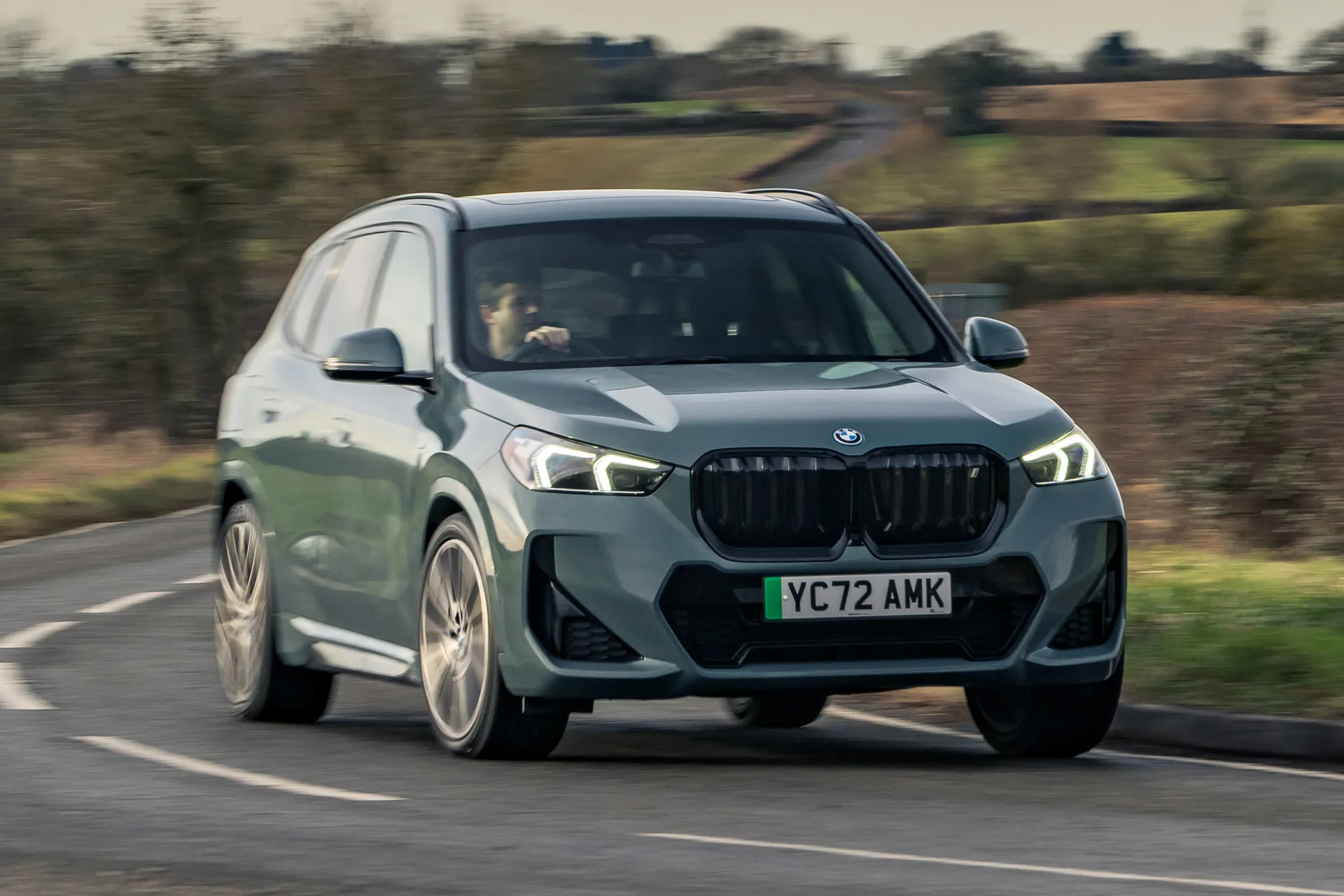
All but the entry-level Sport-trimmed BMW iX1s come as standard with adaptive suspension, which means you can flick a switch to choose between a hard or not-quite-so-hard ride. Select Comfort mode, and the suspension does a reasonably good job of isolating you from the effects of a scruffy road surface, keeping you comfortable. Select a sportier setting, and things become firmer, and slightly unsettled at times, but most of the time, the iX1 is nice and civilised.
It's probably not 'The Ultimate Driving Machine' that BMW's advertising proclaims its cars to be, but it's still a satisfying car to drive, with neat-and-tidy direction changes and an alert feel.
It's also an easy and unintimidating car to drive, which is good news if it's going to be your first electric car. It's bigger than the old BMW i3, yet it still feels just as at home in the city, helped by technology to help you park or squeeze in and out of spaces.
We haven't yet tried the Sport-trimmed car (only available with the lower-powered eDrive20 powertrain option), so we can't comment on how the car behaves on its more basic suspension setup.
What motors and batteries are available in the BMW iX1?
The BMW iX1 comes in two flavours, both powered by a 64.7kWh battery. The entry-level option is the eDrive20, which has a single electric motor on the front axle that delivers a healthy 204PS. It'll do the 0-62mph sprint in 8.6 seconds, and like with many electric cars, it actually feels a bit quicker than this figure suggests, so not only will the level of performance be entirely adequate for most drivers, it'll also be brisk enough to raise a smile for many.
Then there's the high-performance version, the xDrive30, which has an electric motor on each axle. With the motors working together, the four-wheel-drive xDrive30 can produce up to 313PS and 494Nm of torque. That means it feels very rapid, especially when you pull the paddle behind the steering wheel marked 'boost'. This gives you all the power the iX1 can muster for a short 10-second period, great for rapid getaways from a standstill or a pain-free overtake.
Even staying away from the boost button (or the livelier driving modes), the xDrive30 feels very zippy to drive. It'll dart to 62mph in 5.7 seconds, and while that's not quite as quick as the fastest Volvo EX40, it'll be more than rapid enough for the majority of buyers.
While BMW doesn’t offer multiple levels of regenerative braking like other manufacturers, you can use the gear selector to engage ‘B’ mode. This causes the iX1 to slow down quite significantly when you lift off the accelerator pedal, and with a bit of practice, you can negotiate city traffic without touching the brake at all.
BMW iX1 range: How far can you travel on a charge?
The official range of the BMW iX1 xDrive30 varies from 257 miles to 272 miles depending on things like the trim level and which option boxes you tick. The eDrive20 does a little better, delivering between 267 and 293 miles depending on spec.
Refinement and noise levels
The BMW iX1 is as calm and relaxing to drive as an electric car should be, with exceptional suppression of outside noises. It comes with a slightly annoying (in our view) ‘Iconic Sounds’ soundtrack, which makes it sound a bit like a spaceship when you put your foot down, but fortunately you can turn that off very easily and travel in near-silence.
Safety equipment: How safe is the BMW iX1?
Semi-autonomous driving goes hand-in-hand with electric vehicles, so the BMW iX1 is available with a long list of driver-assistance tech to help keep you safe on the road. This includes the Driving Assistance Professional pack, which will keep you in your lane at a set distance from the car in front on the motorway, while the Reversing Assistant can automatically reverse the car along the last 50 metres without your steering input (great if you meet an oncoming vehicle on a country lane). You'll pay handsomely for this optional extra, however. There are two other more affordable driving assistance packs, but they're not quite as clever.
The BMW iX1 has been crash tested by Euro NCAP, achieving the same five-star (out of five) rating as the regular X1.
Charging times BMW iX1: How much does it cost to charge?
"The BMW iX1 can be charged at a rate of up to 130kW, which will add 75 miles of range in as little as 10 minutes. If you find a powerful enough DC charger, it'll be possible to boost the battery from 10 to 80 per cent in less than half an hour."
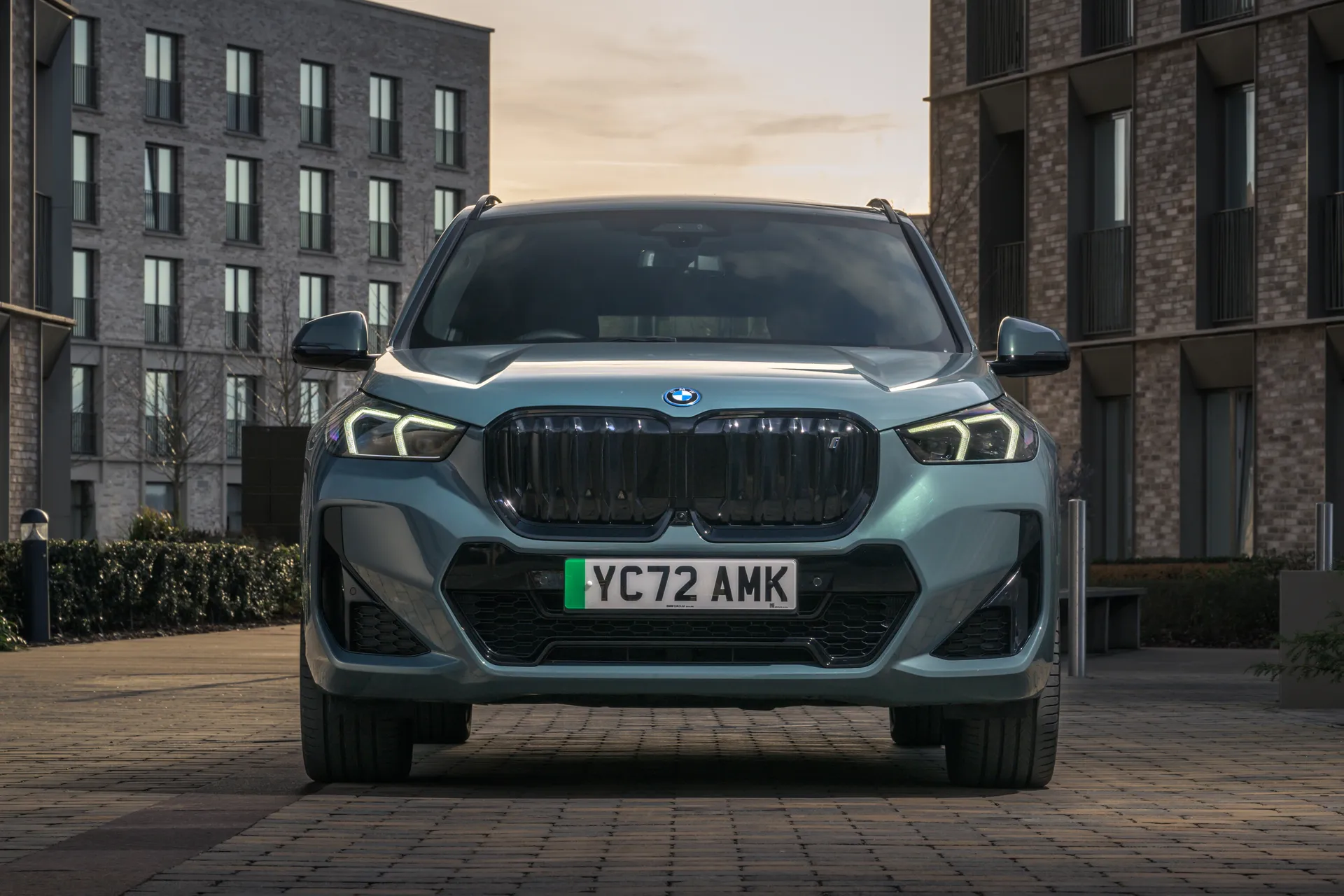
On slower AC chargers, the BMW iX1 can take 11kW as standard, providing a full charge in around six and a half hours. You will be able to opt for 22kW three-phase AC charging, which'll speed this up to three hours and 45 minutes. BMW hasn't confirmed how quickly the iX1 will charge using a 7kW home wallbox.
BMW iX1 reliability and warranty
It might not fill you with confidence that, in the latest iteration of the HonestJohn.co.uk Satisfaction Index, put together by our awesome sister website, the BMW X1 was voted at the ninth most unreliable model in the entire study. However, that performance related specifically to the previous version of the car, which is mechanically different to this one, not to mention that fact that it's not electric. And generally, EVs are more reliable than petrol or diesel cars as there are fewer moving parts and less to actually go wrong.
As a brand, BMW placed 16th out of 33 carmakers in the manufacturer standings for reliability, which puts it pretty much bang on the industry average.
BMW provides a three-year/unlimited-mileage warranty on the iX1, while the battery is covered for eight years/100,000 miles.
BMW iX1 insurance groups and costs
Go for the eDrive20 version, and your car will sit in insurance groups 29 or 30, depending on which spec you buy. Upgrade to the xDrive30, and your insurance groups will be either 37 or 38. This means that premiums won't cheap, but they shouldn't be ruinous, either.
VED car tax: What is the annual road tax on a BMW iX1?
There was a time when you pain no VED at all on an EV, but those days are now gone. These days, you pay the same £195-per-year flat rate as everyone else.
The news gets worse, though, because all versions of the BMW iX1 cost more than £40,000 when brand new. That means they're all liable for the luxury car surcharge, which adds on a hefty additional sum on top. For a temporary five-year period between years two and six of the car's life, you'll pay another £425 of top, taking your annual outlay to £620.
BMW iX1 price
"Buy a brand new BMW iX1, and prices start at around £43,000 for the eDrive20 model, or around £49,000 for the more powerful xDrive30 model. And that's before you've added any optional extras or packs."
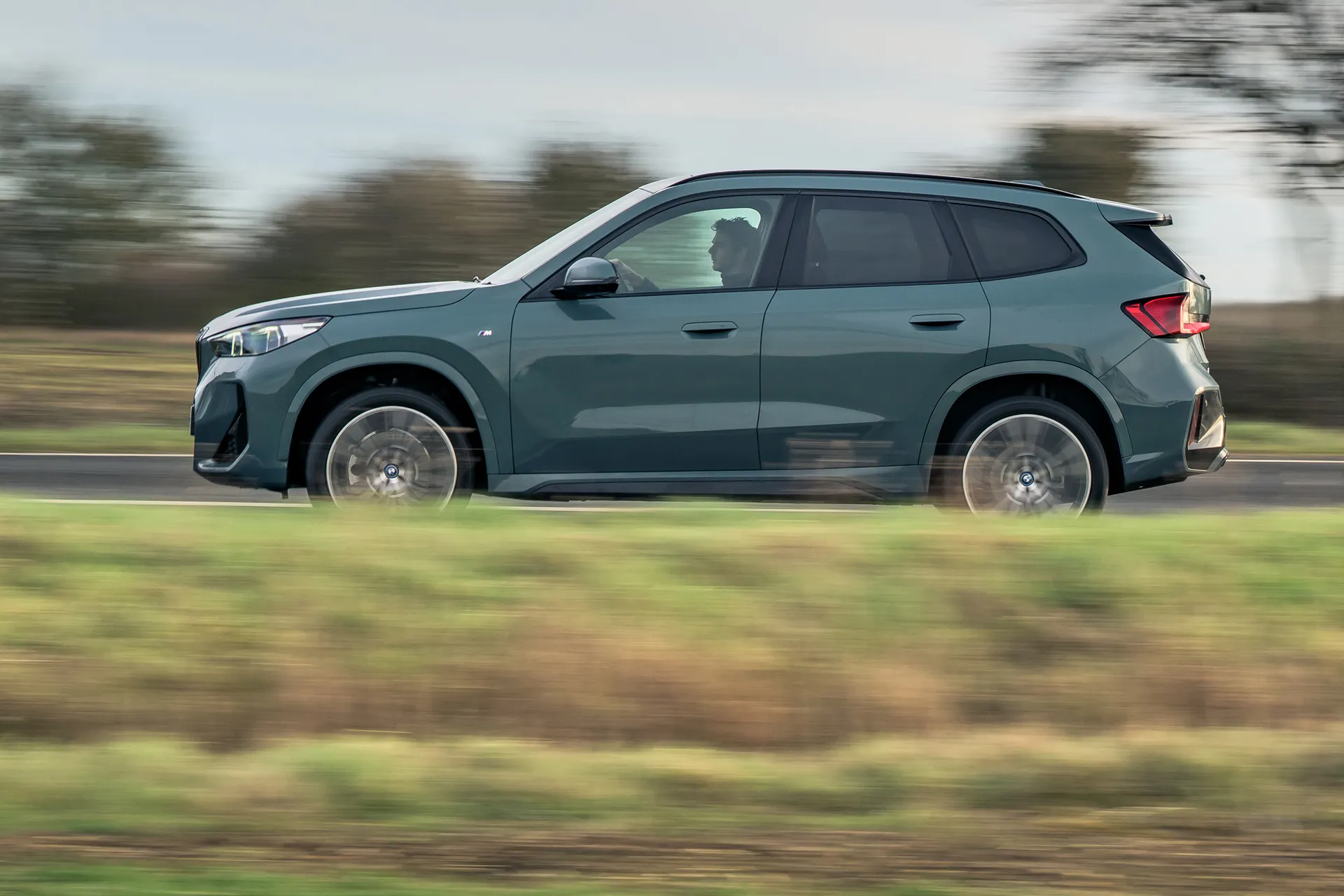
As ever, tremendous savings can be made by turning to the used car market instead, and what better place to do that than right here on heycar. Browse our listings, and you'll find the entry-level version for around £27,500, which represents one heck of a discount. It'll be a 2024 car with around 5,000 miles in the dial. The more powerful version can be had from around £29,000, although these will be carrying a few more miles.
Trim levels and standard equipment
The entry-level BMW iX1 is the Sport, which is only available with the less powerful eDrive20 drivetrain. This version is still well equipped, coming with 17-inch alloy wheels, dual-zone climate control, a powered tailgate, ambient lighting, a leather steering wheel, automatic lights and wipers, and a parking assistant (including the reversing assistant, parking sensors and a reversing camera). You also get the full infotainment system with a 10.7-inch curved infotainment display, along with a 10.25-inch digital instrument cluster.
Standard kit on the BMW iX1 xLine includes 18-inch alloy wheels and adaptive M suspension. Inside, it comes with the brand’s sustainable Sensatec faux-leather trim, heated front seats, plus high-gloss black interior detailing.
The BMW iX1 M Sport adds 19-inch double-spoke bi-colour alloy wheels, M roof rails, racier exterior styling, an M leather steering wheel and sports front seats, but that's about it.
On top of these trim levels, you can also get a number of desirable option packs. These include the Technology Pack (with comfort access, folding door mirrors, adaptive LED headlights, BMW Live Cockpit Professional and wireless phone charging) as well as the Comfort Pack (with heated steering wheel and electric memory seats) and M Sport Pro Pack (with 20-inch alloy wheels, Harmon Kardon sound system and high-gloss shadowline exterior trim).
Ask the heycar experts: common questions
What is the BMW iX1?
How much is the BMW iX1?
What is the range of the BMW iX1?
Get our latest advice, news and offers
Keep me updated by email with the latest advice, news and offers from heycar.
By submitting you agree to our privacy policy





